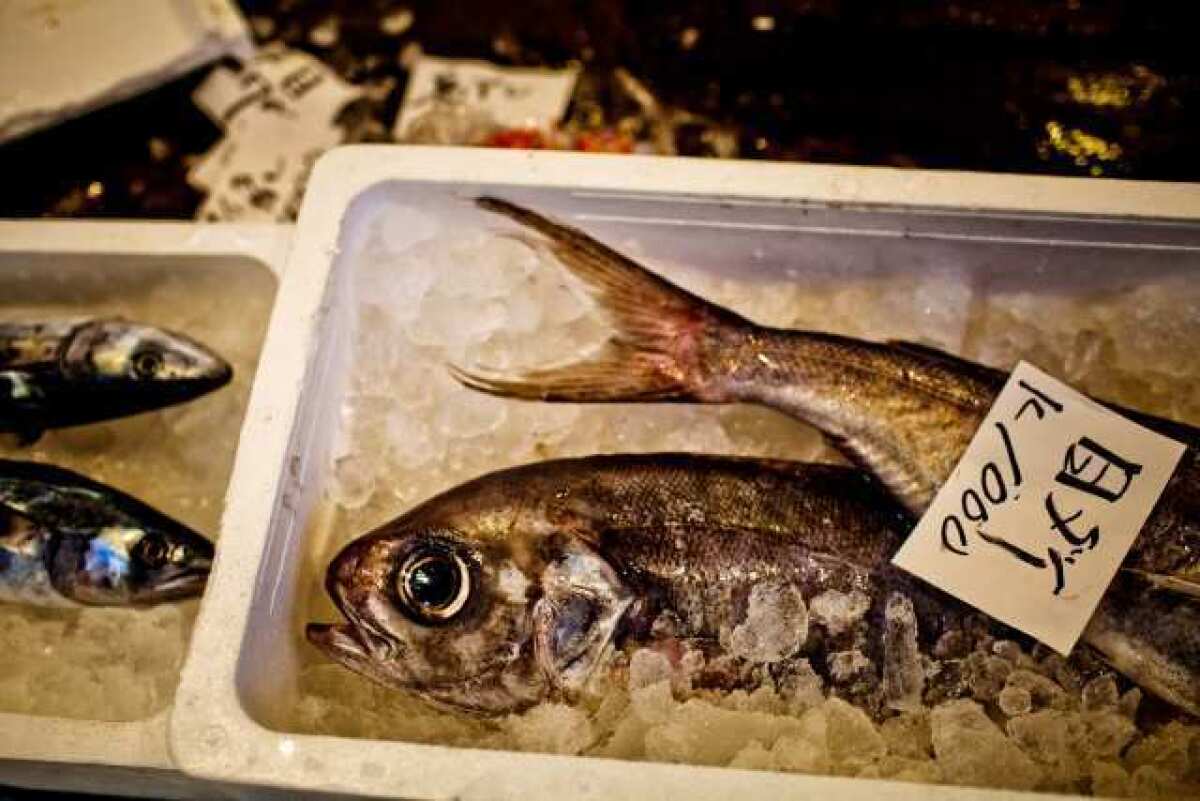Fishy fraud: Officials fight overweighted, overpriced seafood

Does your seafood look more succulent than it is? “Overglazing” fish by adding layers of ice and “soaking” scallops to boost bloat are common -- and fraudulent -- tactics that federal seafood officials say they’re trying to curb.
Economic fraud is endemic is at least 40% of products submitted to the seafood inspection program at the National Marine Fisheries Service, chief quality officer Steven Wilson said at the International Boston Seafood Show this week.
In at least 80% of those cases, added weighting that raises seafood prices is at fault, according to the Associated Press.
“We’ve decided we’re going to take on the economic fraud concern,” Wilson said at the confab.
But efforts to curb shady seafood dealings could be difficult, according to the report.
Since ice-packing and adding water are common techniques to keep fish fresh, officials may struggle to determine at what point the practice is being used to inflate the price of seafood. And since roughly 85% of seafood consumed in the U.S. is imported from abroad, overweighting tactics are even harder to regulate.
Other incidents of fraud could be linked to species substitution, where an expensive species such as mahi mahi could be subbed out for yellowtail without the knowledge of consumers.
A December test from Consumer Reports found that, of 190 pieces of seafood purchased at retail stores and restaurants on the East Coast, a fifth weren’t what they had claimed to be. Consumers spent $80.2 billion on seafood in the U.S. in 2010, the organization said.
Advocacy group Oceana says that as much as 70% of seafood -- including fish such as red snapper, wild salmon and Atlantic cod -- could be mislabeled.
The switcheroos not only inflate fish prices, but they may also endanger health by introducing unexpected toxins or contaminants and also create a market for illegal fishing, according to Oceana. Regulators including the FDA are working to develop DNA databases to help identify questionable fishes.
Consumers have also complained about over-breading of seafood portions, in which shrimp packages, for example, are crammed with extra bread crumbs to raise the weight and thus boost prices, according to a 2010 report prepared for Congress. And new treatments involving carbon monoxide and tasteless smoke to alter the taste of seafood are also raising hackles.
Because many officials consider food safety and bio-terrorism concerns to be more pressing, “regulatory agencies have been less able to maintain control of economic fraud,” according to the report.
RELATED:
Fish often mislabeled, report finds
Target commits to 100% sustainable fish by 2015
Disease outbreaks from imported foods rise, CDC reports







